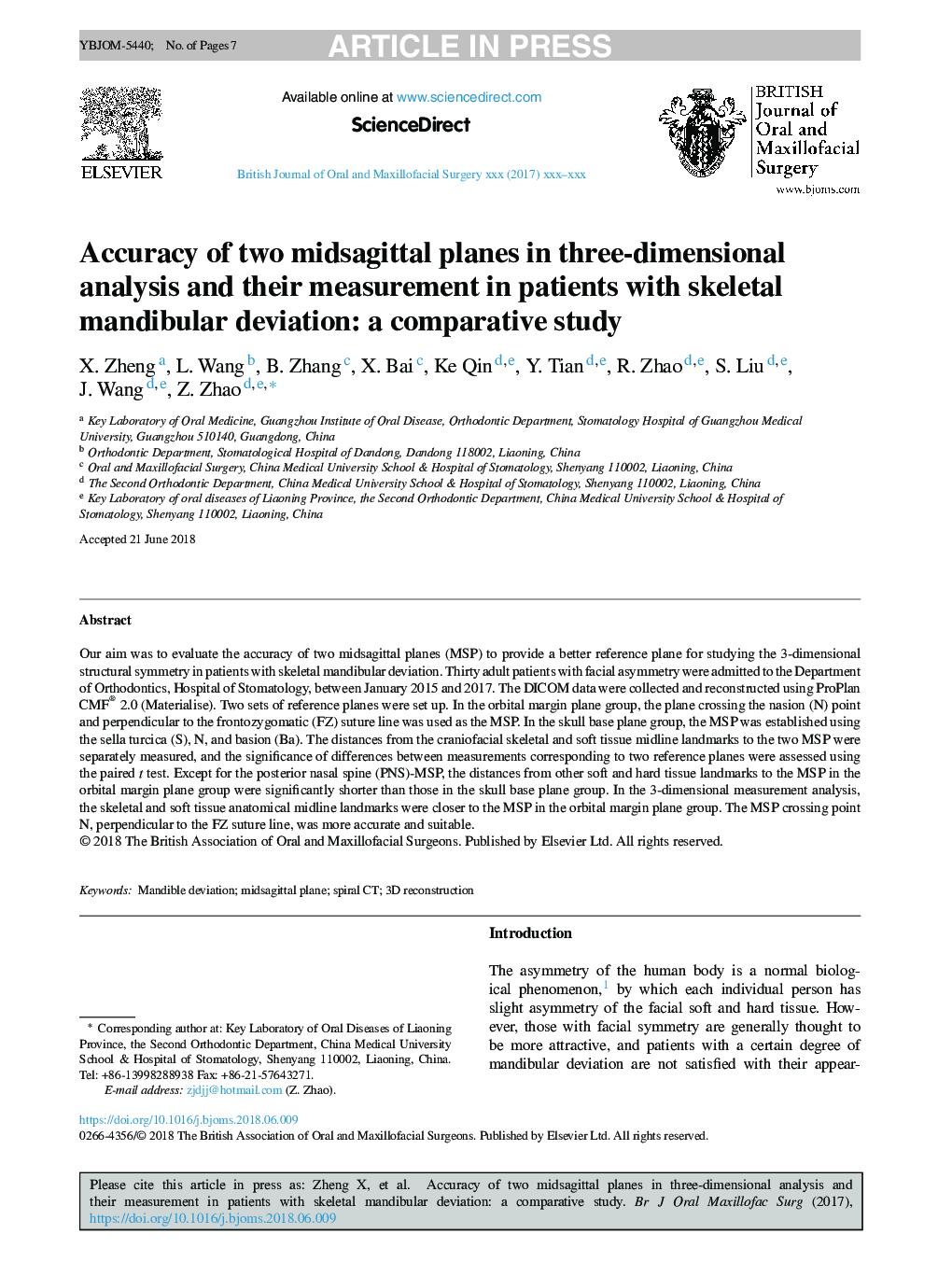| Article ID | Journal | Published Year | Pages | File Type |
|---|---|---|---|---|
| 8696669 | British Journal of Oral and Maxillofacial Surgery | 2018 | 7 Pages |
Abstract
Our aim was to evaluate the accuracy of two midsagittal planes (MSP) to provide a better reference plane for studying the 3-dimensional structural symmetry in patients with skeletal mandibular deviation. Thirty adult patients with facial asymmetry were admitted to the Department of Orthodontics, Hospital of Stomatology, between January 2015 and 2017. The DICOM data were collected and reconstructed using ProPlan CMF® 2.0 (Materialise). Two sets of reference planes were set up. In the orbital margin plane group, the plane crossing the nasion (N) point and perpendicular to the frontozygomatic (FZ) suture line was used as the MSP. In the skull base plane group, the MSP was established using the sella turcica (S), N, and basion (Ba). The distances from the craniofacial skeletal and soft tissue midline landmarks to the two MSP were separately measured, and the significance of differences between measurements corresponding to two reference planes were assessed using the paired t test. Except for the posterior nasal spine (PNS)-MSP, the distances from other soft and hard tissue landmarks to the MSP in the orbital margin plane group were significantly shorter than those in the skull base plane group. In the 3-dimensional measurement analysis, the skeletal and soft tissue anatomical midline landmarks were closer to the MSP in the orbital margin plane group. The MSP crossing point N, perpendicular to the FZ suture line, was more accurate and suitable.
Related Topics
Health Sciences
Medicine and Dentistry
Dentistry, Oral Surgery and Medicine
Authors
X. Zheng, L. Wang, B. Zhang, X. Bai, Ke Qin, Y. Tian, R. Zhao, S. Liu, J. Wang, Z. Zhao,
